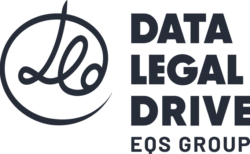- Customize and control the granularity of your processing records with the “extended” mode
- Efficiently manage registers for multiple entities simultaneously by sharing and duplicating treatments
- Easily export your records in various formats
- Collaborate with your business teams and stakeholders using the action engine and integrated discussion thread
- Generate an intelligent summary of the risks associated with your processing with a simple click
- Automatically generate GDPR-compliant information notices enriched from the information on your relevant data processing operations for insertion into your communication media
- Update your records swiftly with integrated repositories and the ability to make mass modifications
- Uphold your accountability by attaching all necessary documentation to your data processing operations
Have you already used Excel for your data processing? A transfer option lets you quickly and securely integrate your data into the Data Legal Drive platform.
The GDPR record of processing activities is an instrument that is essential for your compliance and allows you to identify your personal data processing activities.
The aim is to protect personal data within your company correctly and to help you respect individual rights and freedoms.
Article 30 of the General Data Protection Regulation (GDPR) states the requirement to hold a record of processing activities.
The objective? To make public or private organisations more accountable and to demonstrate compliance with the GDPR.
The requirement for a GDPR processing record applies to all data controllers and their data processors. However, an exception to this obligation applies if the organisation has at most 250 employees.
The processing map enables compliance to be followed over time and to feed the processing record. It is a helpful tool for companies to measure their compliance and take action to maintain it.
It will allow your company to react in any situation and help you in all other essential tasks, such as respecting the rights of data subjects to their data and their privacy.
While completing the record of processing, it is essential to be organised and to follow a structured approach. This exercise requires all personal data processing activities to be recorded and described in detail. It is, therefore, necessary to specify each processing activity, whether it involves sensitive data, for what purposes, who the actors involved (Data Protection Officer, Data Controller, service providers, etc.), whether or not there are data transfers, what legal basis (consent, contract, etc.) is used, the source of the data collected, etc.
That’s why carrying out a data processing map beforehand is recommended.
